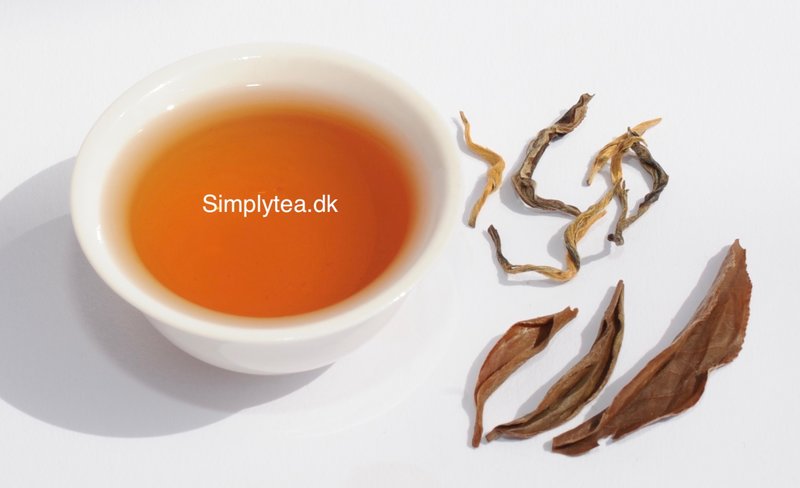Even before tea was discovered in Assam in 1823 by the Bruce brothers, the Singpho tribe in Jorhat had been using the leaves as an herbal drink. The discovery of the tea plant in Jorhat, Assam, enabled the British East India Company to develop the tea trade, which until then had been monopolized by China.
After a few years, Indian-produced tea was industrialized by British inventors, and the delicate and complex Chinese teas were largely eliminated by the East India Tea Company, with fabricated and incriminating stories about poisoned and spoiled tea from China. Unfortunately, many of these stories still persist today, making it difficult to find genuine Chinese quality tea in Denmark. China’s tea export to Britain was 35 million kilos in 1872 and only 7 million in 1912.
It still took about 30 years for the robust and malty tea to be accepted as the preferred British drink. With a little milk and sugar, the tea became a nutritious beverage for the working class during the Industrial Revolution.
The 1960s brought change, and the tea bag was introduced. Today, many Brits believe this undoubtedly marked the end of a decent cup of tea. It doesn’t help that most tea bags no longer contain Assam but a blend of tea dust or fannings from Africa, Malaysia, and Argentina. Fannings refer to slightly larger pieces of tea dust. Blending the teas ensures that they taste exactly the same, regardless of the brand. But there is hope on the horizon.
In the spring of 2017, I met Assamese-born Raj Barooah during a trip to subtropical Yunnan in China. Throughout our journey to the birthplace of tea, Yunnan, which is the origin of the assamica variety, we learned to pick, wither, oxidize, roll, and dry the tea to bring out the fruity notes and caramel flavor that are unique to subtropical teas.
Raj is the owner of Aideobari Tea Estate in Jorhat, Assam. Like me, he was in Yunnan to learn how to produce black tea using the forgotten handcraft skills.
Aideobari Tea Estate
Subsequently, Raj and his team of tea masters have experimented with various hand-processing techniques to create handcrafted tea. I have been privileged to oversee the development and have participated in assessing and selecting these fine teas. The second flush Assam from June has more character and flavor notes compared to the first flush tea from April. This is undoubtedly due to the drought following the spring monsoon rains.
In April 2018, I had the pleasure of visiting Raj at his estate in Jorhat, Assam. He guided me around his estate and showed me how he tends to his tea gardens.
Sustainable Tea Plantation Assam
It was evident to see that the gardens are sustainable. Tall trees grow between the rows of tea bushes, providing habitat for much wildlife while also offering shade from the blazing sun. Ferns and Guatemala grass grow among the bushes, generating nutrients for the soil and serving as a playground for jungle cats and occasionally a leopard. No pesticides or artificial fertilizers have ever been used on the plantation, which has belonged to Raj’s parents. They took over Aideobari Tea Estate from the British in 1961.
Like many tea gardens in India, the leaves are hand-picked, but all processing is done using machines. It was the British who introduced machine processing of tea. They discovered that the Singpho tribe chopped the leaves very finely to activate the enzyme polyphenol oxidase, which gives tea leaves their dark red-brown color. The Singpho tribe were warriors and uninterested in helping the British produce tea. Without skilled labor, it was necessary to invent a machine that could process tea. The Chinese had gained their knowledge of tea from their ancestors and were unwilling to share it with the British. The first machines used were tobacco cutters. In 1870, William Jackson invented machines for tea production, and in the 1930s, the CTC process (Cut-Tear-Curl) was invented by Sir William McKercher in Assam.
This is precisely what makes the big difference between tea from China and the rest of the world. The best Chinese teas are hand-processed, while the rest of the world uses machines. Hand-processed tea, also known as orthodox processed tea, is in high demand from consumers worldwide. Hand-rolling techniques develop complex nuances in flavor that no machine can produce. The health benefits and aromatic complexity far exceed those of machine-made tea many times over, and this also applies to the price per kilo. What is the point of producing a kilo of tea for 14 DKK when good quality hand-processed tea can be sold for 700 DKK per kilo?
If you have never tried Assam tea before, now is a better time than ever. We have just received a shipment of second flush hand-processed Assam from Raj, and it is everything he promised it would be. The production of these teas improves year after year.

Rujani Tippy Reserve Premium Assam
